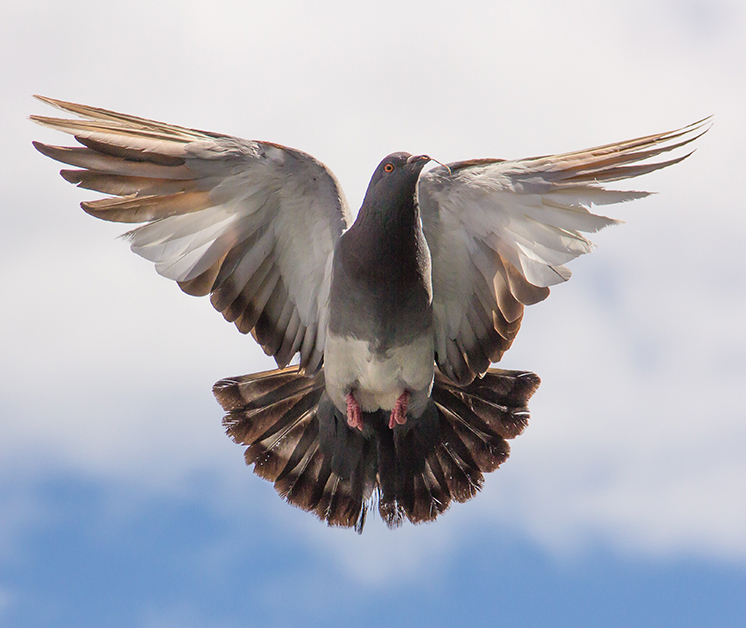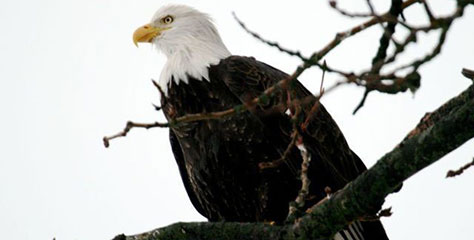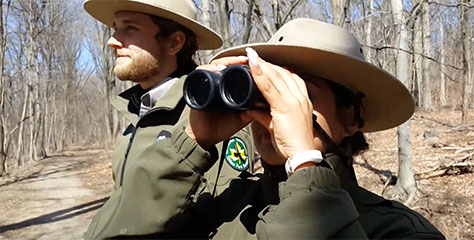NYC’s Most Iconic Residents: Pigeons
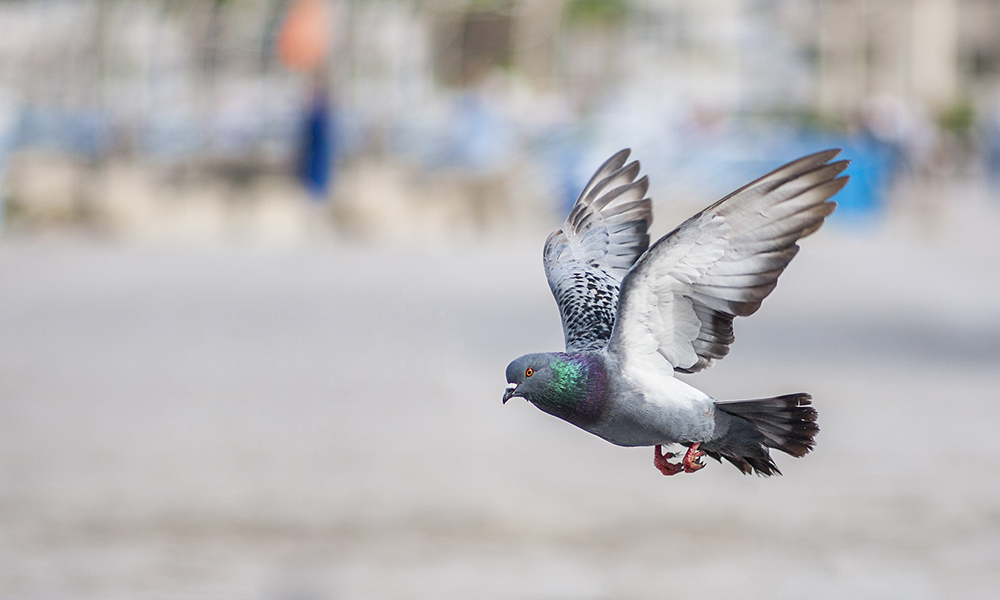
Pigeons are as much a part of NYC’s identity as bagels, pizza, and the subway. Despite how common they are, these birds are often overlooked and underappreciated. Read on to learn more about the “coo”-est New Yorkers around!
* Click on images to view larger
Appearance
Pigeons, sometimes known as rock doves, are largely harmless and gentle birds. These plump birds have a skin saddle (cere) between their small bills and yellow/orange eyes. Along their necks, you can often observe a blue and purple “oil slick” pattern followed by dark and light gray plumage dotted with black patterns around their wings. Some pigeons have white spots or are all white - and even more exciting are the variety that replaces gray tones for brown and khaki coloring!
When compared to their wild counterparts, city dwelling pigeons tend to be darker in color. Some researchers speculate that this change is an adaptation that makes these specific birds better suited to blending into the architectural features of cities like concrete, pavement, and various dark metal structures like bridges and overpasses.
Behavior, Diet, and Habitat
These social birds are often seen hanging out in groups called flocks or kits. Because pigeons are monogamous and mate for life, they tend to stick to familiar friendship groups for safety. When it comes to choosing a home, they rely on building niches, bridges, and outcroppings that mimic their natural habitats of rocky shore cliffs and ledges.
Though their long wings and strong muscles make them quick fliers, they tend to stick to the ground for easier access to food like grains, seeds, fruits, and the occasional insect, snail, or worm. If they steer clear of dangerous predators and accidents, their lifespan in the wild averages anywhere from 2-5 years - but these hardy birds have been known to live up to 30 years in captivity!
Laying eggs is a year-round business for pigeons and they often lay eggs in pairs of two. During the day, the male and female will take turns incubating while the other goes searching for food. But the food they forage isn’t the only nutrition baby pigeons get.
Did you know pigeons produce milk? “Crop milk” is a nutrient-rich liquid that comes from specialized cells in a pigeon's throat. Both the male and female pigeon parents will begin to produce this milk a couple of days before their eggs hatch. After their babies are old enough to eat regular food (about 10 days after hatching), the specialized milk-producing cells return to normal.
* Click on images to view larger
Why Don’t You Ever See Baby Pigeons?
When baby birds break through their eggs, they are at their most vulnerable! They start their lives with little to no feathers, closed eyes, and soft beaks and claws. Baby pigeons take just over a month to grow strong enough to take flight and before this time they are cared for 24/7 by attentive parents. When they are finally ready to take the plunge out of the nest, they have already developed into full sized pigeons. So, the reason you never see baby pigeons is because they are busy growing in their nests!
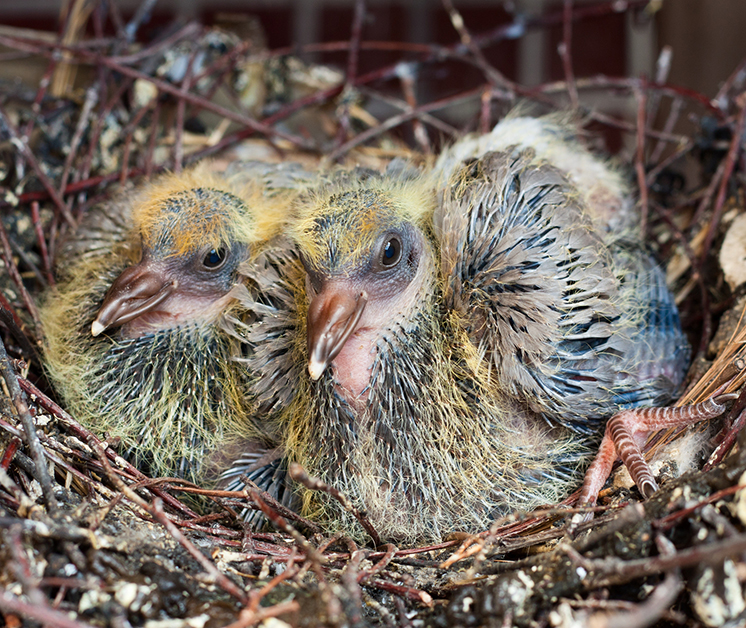
Human and Pigeon Relationships
Pigeons originate from a family of several hundred species of birds called “Columbidae”. The ones that we are most familiar with in New York City are a feral subspecies called “Columba livia” or the rock dove. Rock doves are naturally wild, but the pigeons we see the most in our cities are descended from domesticated pigeons that were kept as pets and released thousands of years ago.
The pigeon is the oldest domesticated bird on record. Though ancient Egyptian hieroglyphics dating back more than 5,000 years mention them as part of daily life, some researchers think that their history alongside humans goes as far back as 10,000 years!
In Europe, wealthy classes often kept and bred pigeons to have appealing features, such as extravagant plumage or beautiful sounding coos. Meanwhile, common people saw them as loyal pets and sources of food that could be easily maintained and even trained to send messages across long distances. When they were brought to the American colonies in the 1800s, pigeons exploded in population and were oftentimes released into the wild. Though they were given freedom, pigeons tended to stay close to human civilization due to easy sources of food and ample places for roosting.
Today, pigeons still like to stay close to humans and can be seen all over New York City!
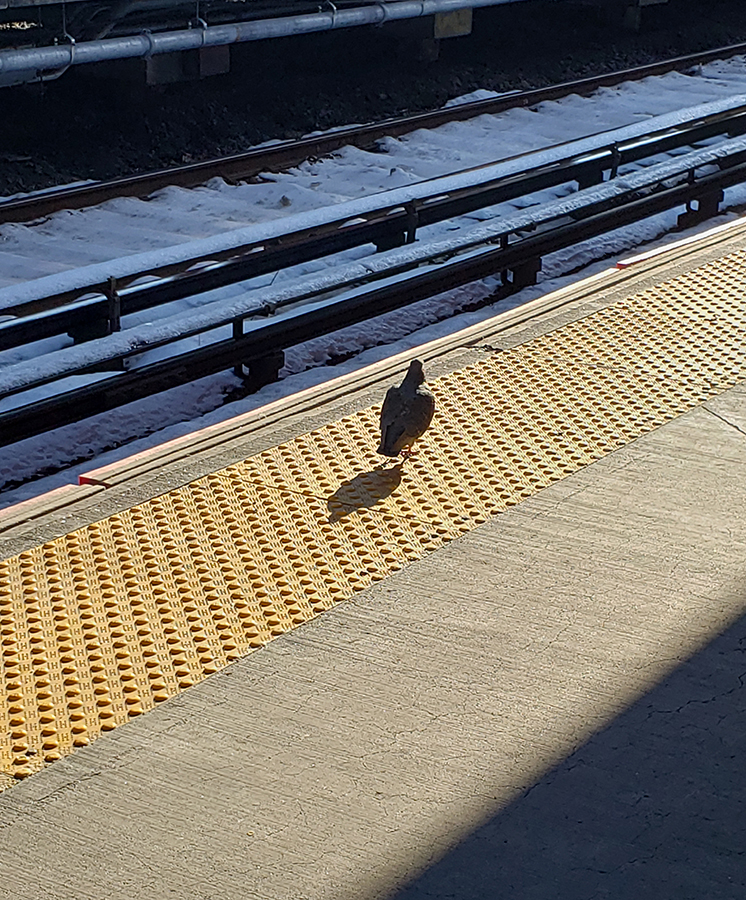
Pigeon GPS
You may have heard of “homing”, “racing”, or “messenger” pigeons throughout history. This is because of a clever internal “Pigeon GPS” of sorts that humans have taken full advantage of! Tests have proven that even if a pigeon is released in an unfamiliar location up to 620 miles away, it can use a combination of complex internal sensors that track the Earth’s magnetic field to find its way back home. This remarkable ability has been harnessed throughout human history way before the invention of things like the internet to quickly send messages across long distances.
One of the most notable uses of “Pigeon GPS” has been in a pretty unexpected context - war and espionage! In World War II, a United States Army homing pigeon named G.I. Joe was awarded the Dicken Medal for Gallantry for “the most outstanding flight” on record (20 miles in 20 minutes) that resulted in saving the lives of over 100 servicemen that were almost caught in a badly timed crossfire. Pigeons such as G.I. Joe were sometimes fashioned with tiny cameras and backpacks to carry messages back and forth and even take pictures beyond enemy lines!
Dangerous Skies and Sidewalks
Due to a pigeon’s curious and friendly nature, they often unknowingly find themselves in dangerous situations. Though pigeons can learn things like traffic patterns, some are caught in the path of oncoming traffic in the form of cars, trains, bikes, and pedestrians. Human waste like loose strings from clothing or even hair can get caught around their small toes causing infection, weakness, and sometimes, constriction to the point of amputation.
They have no natural defense mechanism against their predators with the exception of their flying abilities. Though that helps with land predators like possums, racoons and sometimes rats, they are no match against birds of prey like Peregrine Falcons, Red-tailed Hawks, and Eastern Screech Owls.
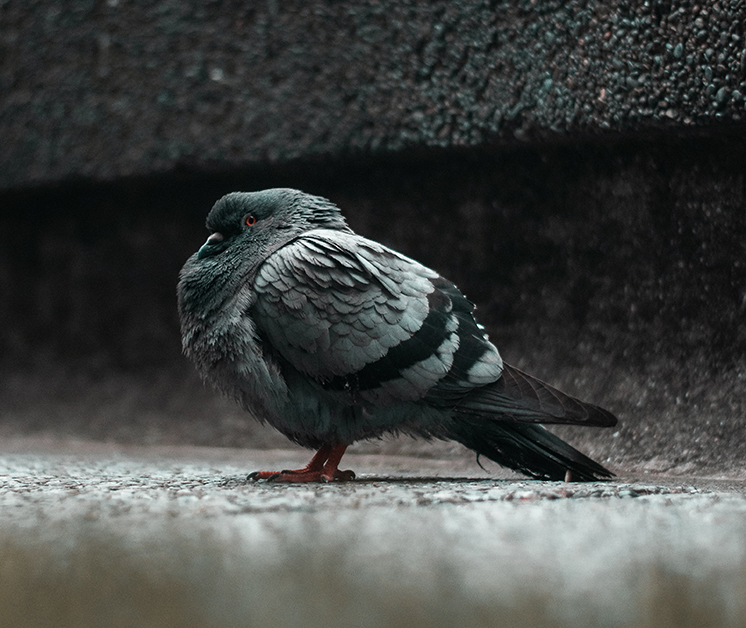
A Pigeon Paradise
Nestled in between 69th St and Broadway in Woodside, Queens sits a small park named “Pigeon Paradise.” Formally known as the “Isle of the Squab”, this area was named as a fun ode to NYC’s unofficial avian mascot! Though this park is no more a paradise than the rest of the city, we’d like to think that pigeons appreciate having their own memorialized patch of land.
Coexisting with Pigeons in NYC
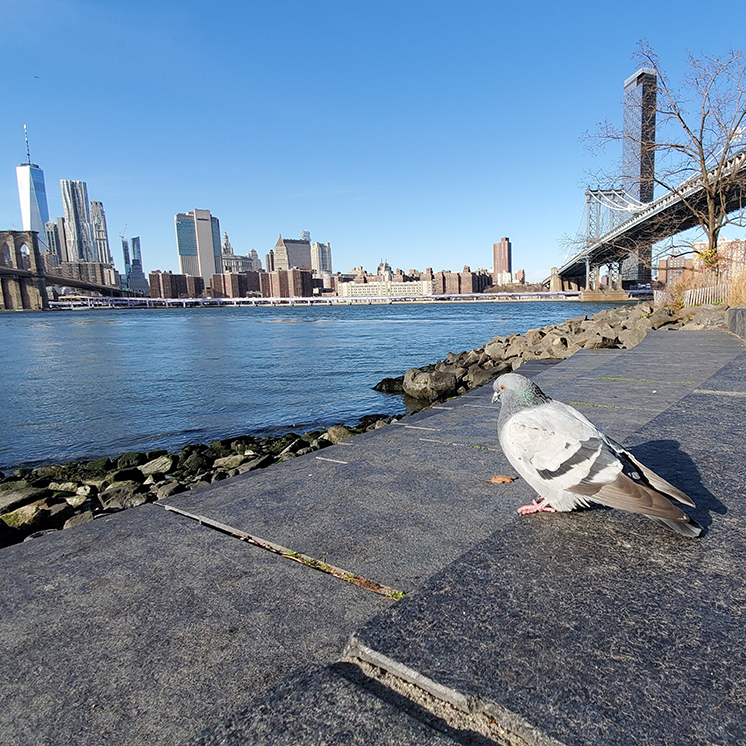
- No feeding! Like any New Yorker, pigeons know where to find the best food and do not need to be fed by humans. Feeding can be problematic, as leftover food will attract other wildlife.
- Help us keep the park clean! Dispose of litter properly when visiting parks. Garbage can be mistaken for food and sometimes wildlife, like pigeons, can become entangled in it.
Explore Wildlife in New York City
New York City is home to an amazing abundance of wildlife from birds to eels and coyotes and deer. Learn more about their life here in the big city and how we help them thrive.
Wildlife in New York City
Discover which wildlife live in our city and find fun wildlife activities to learn more!
Wildlife Calendar
Use our wildlife calendar to learn about wildlife behavior by the month and where they thrive in our city.
Wildlife Programs
Join our Urban Park Rangers and friends as we head into the park to see and learn about wildlife.



